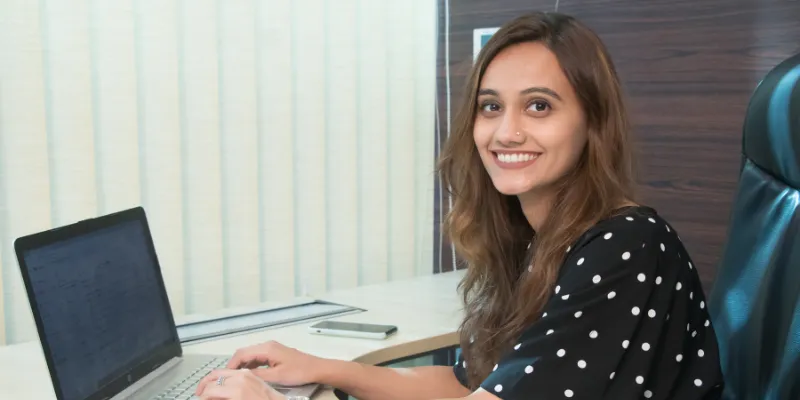An expert in orthodontics, Arpi Mehta noticed that children in developed countries had their first dental consultations by the time they turned seven years old. Whereas in India, most people did not realise the need for orthodontic care until their late teens or early adulthood.
The doctor strongly felt the idea of using visible, metal braces for two years to administer ‘smile correction’ was acting as a major deterrent to late teens and young adults seeking orthodontic treatment.
Arpi says:
“Many individuals in India who need smile correction end up foregoing any kind of treatment. Of the 600 million Indians who could benefit tremendously from smile correction, less than 10 percent undergo the treatment.”
This gap posed a business opportunity for Arpi to provide Indians with invisible or clear aligners – an idea popularised in the West by San Jose-headquartered Align Technology, which makes Invisalign braces. Invisalign treatment is nothing but a clear alternative to metal braces for those who need it.
Arpi pursued a certification in lingual (invisible) orthodontics, and partnered with three orthodontists, Pravin Shetty, Manjul Jain and Anirudh Kale. Together, they launched smile makeover service toothsi in Mumbai in November 2018.
Today, toothsi clinics are present in Delhi/NCR, Mumbai, Ahmedabad, Chandigarh, Hyderabad, Bengaluru, and Pune. Arpi does not disclose the company’s revenue, but reveals they have delivered 11,000 smile makeover plans, and is planning to reach Rs 100 crore annual recurring revenue (ARR) in a few months.

In an interview with YS, Arpi narrates how toothsi was built, and describes her vision for its full-stack, D2C, customer-oriented approach.
Edited excerpts:
YS: What inspired you to start toothsi? How did you begin this journey?
Arpi Mehta [AM]: In Paris, I saw adults up to the age of 80 fulfilling their desire to get a smile correction. I realised the importance of invisible aligners, and the need to make this product accessible to the Indian population. A good smile does wonders to one’s confidence, regardless of one’s age.
This led me to collaborate with my co-founders, who were already working in the field of Lingual Orthodontics.
We took a year to develop our in-house clear aligner technology as a more viable alternative to braces by virtue of being invisible and extremely convenient to wear.
Our clear aligners are a series of customised flexible plastic trays pre-programmed through software to move a set of teeth in a specific manner. This high level of customisation allows us to deliver superlative smile correction in six to eight months on average.
YS: How did you gather the resources to start? How much was invested?
AM: We initially bootstrapped the company. My family and co-founders invested personal capital of Rs 5 crore in total to build the technology and get the business off the ground in the first year. This capital allowed us to make mistakes while refining the business model.
A year later, having established the proof of concept, we got investors to believe in our value proposition and business model to secure additional seed funding that helped us to expand our team and operational footprint.
We recently raised $5 million from individual and institutional investors. Our total funding, to date, stands at $9 million.
YS: What were your initial challenges? How did you address them?
AM: The initial challenge was to persuade customers that simple and transparent plastic material can act as a superior substitute to the painful and conspicuous metal braces. Within the first month of our website launch, we had close to 25 queries.
I was constantly on the phone and WhatsApp, explaining the product to the first batch of customers, and even went for the first few scans at customers’ homes to gauge their reactions. People began to trust us only when we clearly communicated our value proposition.
Another challenge was getting our employees excited about our vision that transparent aligners can disrupt the teeth straightening market in India.
The third challenge was to persuade investors to fund the company, which we managed by building a strong founding team, a robust and defensible IP, and a scalable business model.
YS: Where do you manufacture the clear aligners?
AM: toothsi is a proudly homegrown brand, and we own the end-to-end value chain for our entire range of products. Our manufacturing operations take place in our laboratory in Mumbai, India.
YS: What is your business model? What are some unique business strategies you follow?
AM: We follow a full-stack, D2C, customer-oriented model to provide customised aligners for every customer’s smile correction journey. We manage all processes – from counselling and scanning to treatment planning and manufacturing – completely in-house.
Supporting this approach required us to build our entire value chain from scratch. Given that we all came from a doctor-led mindset, we also focussed on developing strong unit economics and monetisation capabilities from day one.
Today, we have a tech-first approach, and aim to leverage our funding to enhance our core technology and provide a seamless digital customer experience.

Arpi Mehta, Cofounder and CEO, Toothsi
YS: What is the USP of the products and services? What is their pricing?
AM: We are creating a completely new category of at-home, invisible smile correction services with our differentiated value proposition. Our products are created with the best of German materials to be transparent, tasteless, lightweight, flexible, and customised to each customer’s specific dental requirements.
This level of personalisation ensures that toothsi aligners do not affect the tongue or jaw movement, and are extremely comfortable to use, with zero irritation or pain.
The smile makeover begins with a free-of-cost, professional, at-home scanning service conducted by experts, with the scan results evaluated by an expert team of veteran orthodontists and dentists to create a personalised ‘smile plan’ for each customer.
These smile plans come with detailed digital visualisation to map the before-and-after picture of the transformation. Once the customer approves the smile plan and makes the payment, toothsi manufactures and home-delivers the aligners.
Apart from being transparent and easy-to-use, toothsi aligners are up to 70 percent more affordable than most teeth straightening options currently available in the Indian market.
YS: Who is your target audience?
AM: Our primary target audience is the young, aspirational urban consumer base between the ages of 18 and 35 years. Since this demographic is digitally-savvy, we target them through our brand website.
In order to cater to the growing demand from Tier II and Tier III regions for our services, we have also partnered with over 600 clinics across the country to expand our presence and end-customer outreach in regional markets.
YS: Are there competitors following a similar D2C model? How do you stay ahead of the curve?
AM: Our competitors include TeethLogic, Snazzyalign, and LoveMyBraces amongst others. Our differentiation lies in three key factors. The first is our at-home scanning service delivered by toothsi professionals.
Our second differentiator is our full stack approach that empowers us to sustain the unit economics while maintaining the top-tier quality of our service delivery. The third is our combined domain expertise of tech and business-minded professionals in the founding team.
YS: How did COVID-19 impact the business, and what was done to address it?
AM: For a D2C brand such as ours, the COVID-19 outbreak has only served to accelerate the growth trajectory. While Indians were hesitant to venture out of their homes during the lockdown to avoid accidental transmission, they looked at the period of extended home confinement as a way to emerge as a better version of themselves.
They realised they could boost their self-confidence by enhancing their physical appearances. Our smile correction and teeth alignment services, with our at-home proposition, aligned perfectly with this abrupt white space that had emerged.
Consequently, our business has grown by nearly 40 percent quarter-on-quarter over the past eight months.
YS: What are your future plans for the company?
AM: As we enter the next phase of our growth trajectory, we are looking to further augment our tech infrastructure to enhance our backend and frontend technology.
We also have plans to expand our 600-strong team, both in terms of size and skill-sets, to execute and deliver at scale. This will also enable us to penetrate deeper into the high-potential Indian market by taking our state-of-the-art services to more geographies across the country over the next 18 months.
R&D will be another area of priority for us in the future, where we plan to punch in 10 percent of our total investments.






![Read more about the article [Funding Galore] $791 Mn Raised By Indian Startups This Week](https://blog.digitalsevaa.com/wp-content/uploads/2022/06/FG_20-25-June_Social-300x157.jpg)

